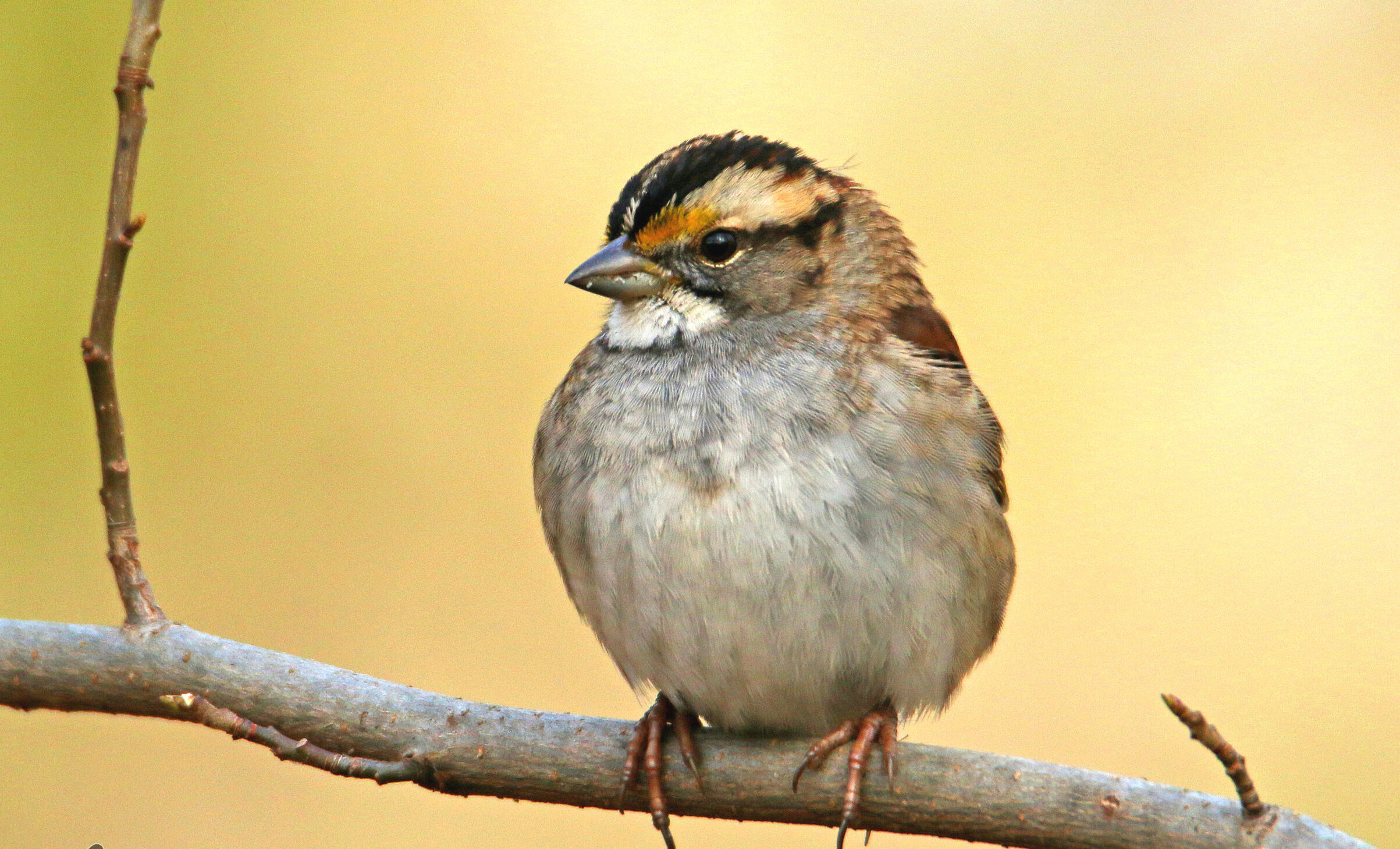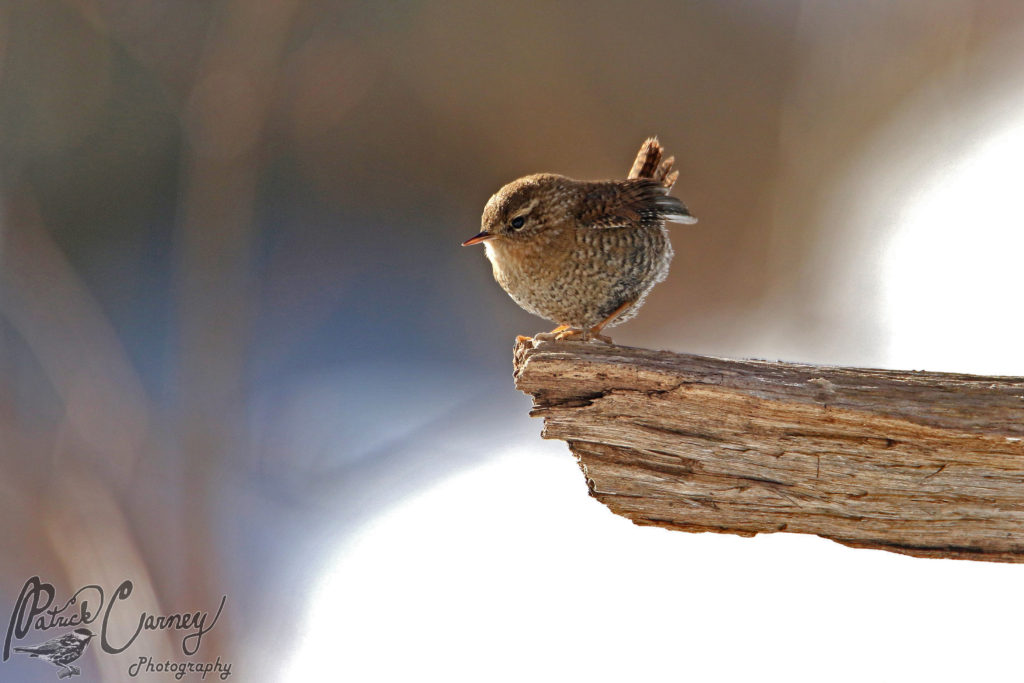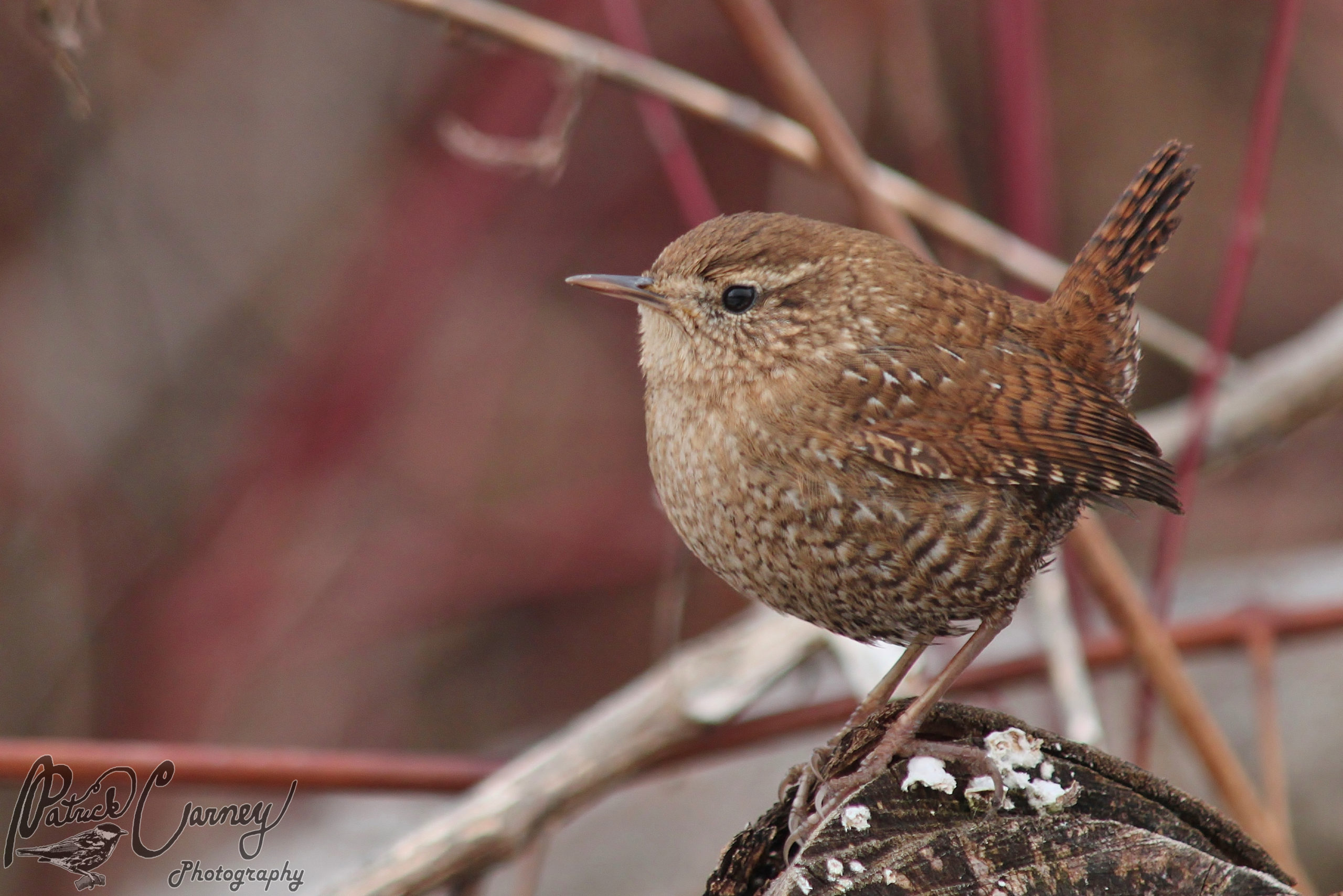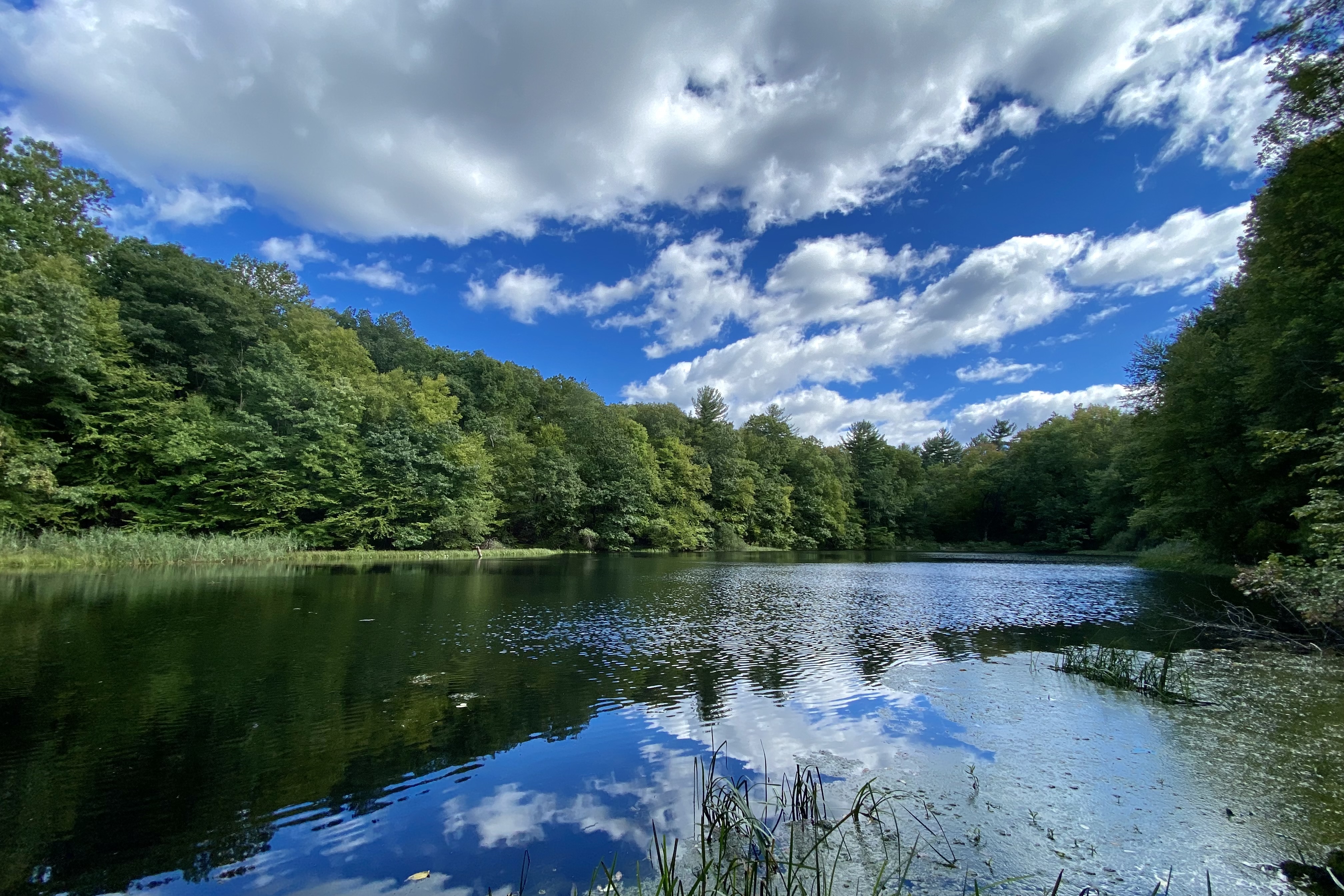A Special Winter Guest: The Winter Wren
Wildlife is still abundant at the Sanctuary in midwinter, and there are some species present now that can't be seen at other times of the year.
A Seasonal Journey
This time of year, many of our birds have departed south for warmer climates and tropical vistas. While many believe that winter temperatures are the primary drivers of migration, the real reason that birds travel south for the winter is actually the availability (or lack) of food. Insectivorous birds such as warblers, flycatchers, and swallows depart for warmer areas where insects are abundant year-

a White-throated Sparrow
round, while frugivores such as many sparrows, woodpeckers, chickadees, and nuthatches remain the entire year. These birds also incorporate large numbers of insects into their diets, but have ways of finding them in winter that other birds do not. Woodpeckers use their sharp beaks and long, barbed tongues to dig beetle larvae and ants out of trees. White-throated Sparrows dance in the leaf litter, scraping back and forth to reveal overwintering caterpillars and other insects and arachnids.
A Seasonal Visitor
There are some birds visiting Westmoreland this time of year that nest much further north in the spring and summer. For them, southern NY is their final migration destination, warm and balmy compared to winter conditions in the Adirondacks and Canada. One such bird is the Winter Wren. The Winter Wren is an adorable, rotund, and very small bird, warm brown in color and lightly patterned. The tail is short and stumpy, and often held erect when the bird is perched. This tail posture is characteristic of many wrens. Spotting the Winter Wren can be tricky. These birds take advantage of their small stature to squeeze into rock crevices, under fallen trees, through dense shrubbery, and sometimes even beneath the leaf litter, only out in the open when they flit briefly from one sheltered spot to the next. This behavior is their primary method of searching for food and staying safe from predators. Insects are chief among the Winter Wren’s diet, and they are experts at finding overwintering insects that manage to elude other birds.

Winter Wrens often sing from exposed perches, providing a unique opportunity to observe them in the open
While their behaviors make Winter Wrens difficult to spot, their presence is often revealed by their sounds. For such a diminutive species, the Winter Wren is very noisy. Listen for a loud, squeaky kilp kilp kilp call, delivered as the bird forages. If you’re lucky, you may even hear the Winter Wren sing, a truly captivating experience, as Winter Wrens possess one of the most beautiful and intricate songs of any bird species found in the forests of New York. An extremely complex, tinkling series of notes, whistles, and trills echoes through the woods, announcing the presence of this tiny bird who refuses to be ignored despite its size.
Finding a Winter Wren
Winter Wrens don’t nest this far south in New York, but they still sing through the winter months, while they can be found at Westmoreland Sanctuary. At Westmoreland, Winter Wrens are most often seen along the Veery Trail and the Brookside Trail. Visit soon, and you may catch a glimpse of one of our most special winter visitors.

by Patrick Carney
Westmoreland Outdoor Environmental Educator

